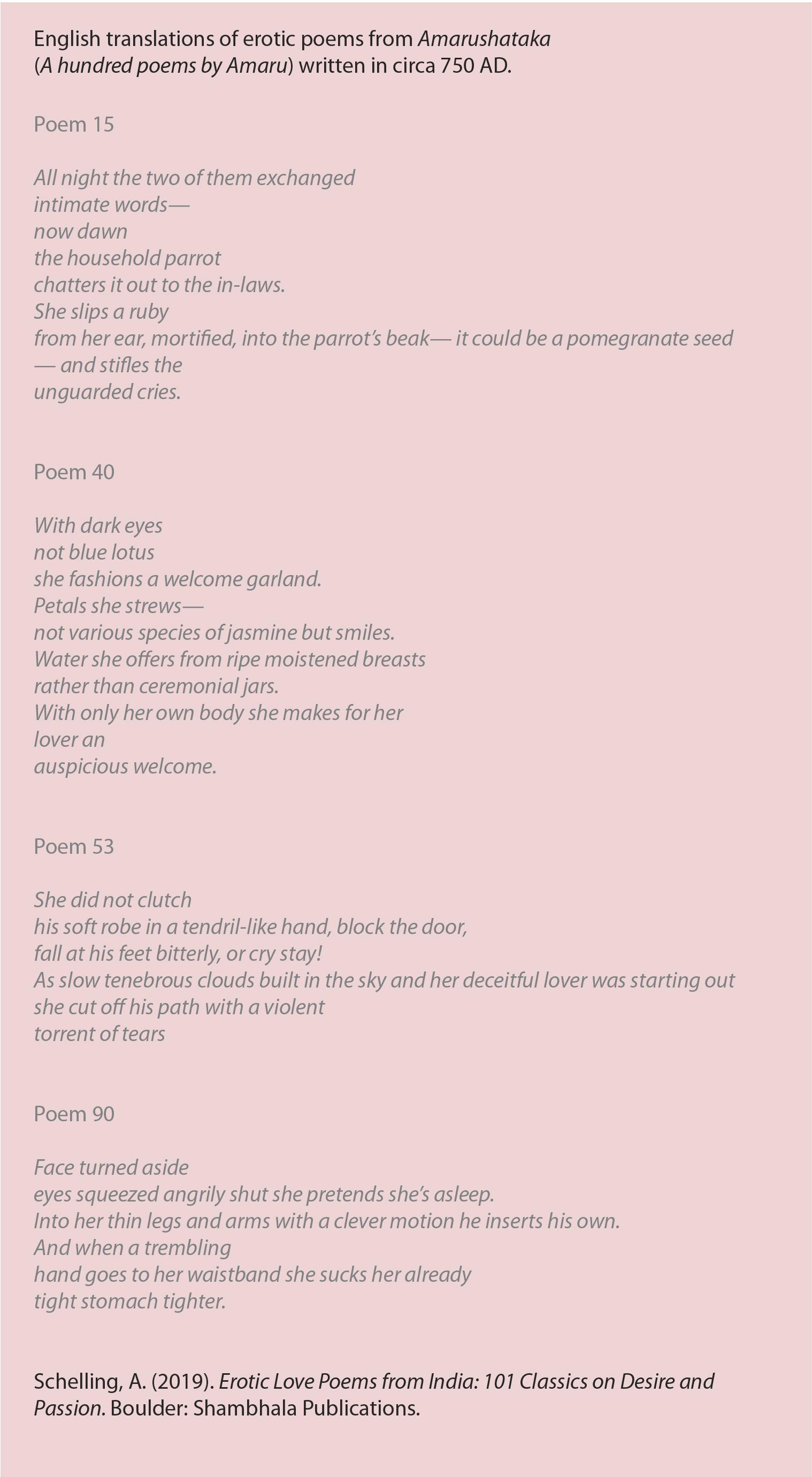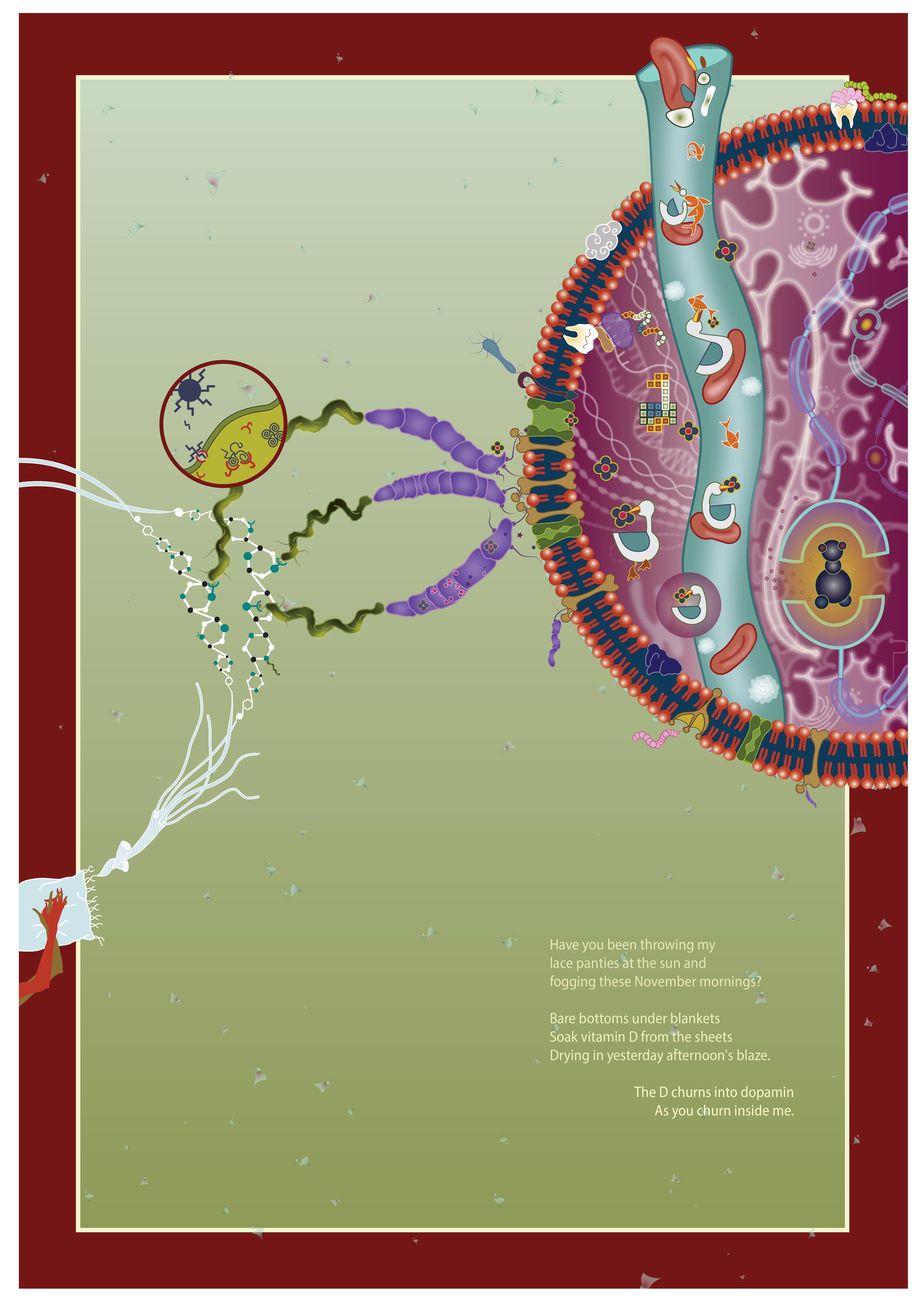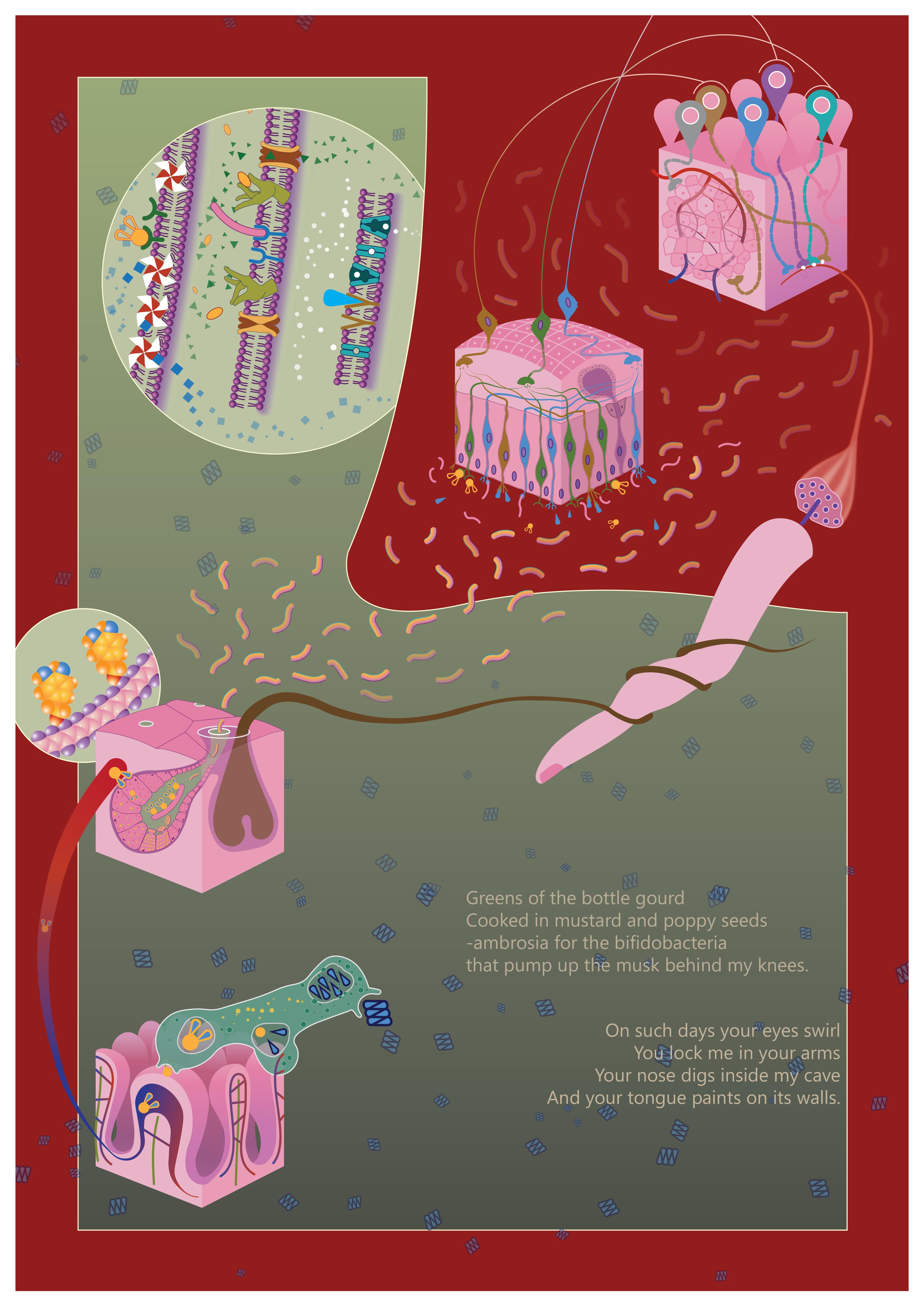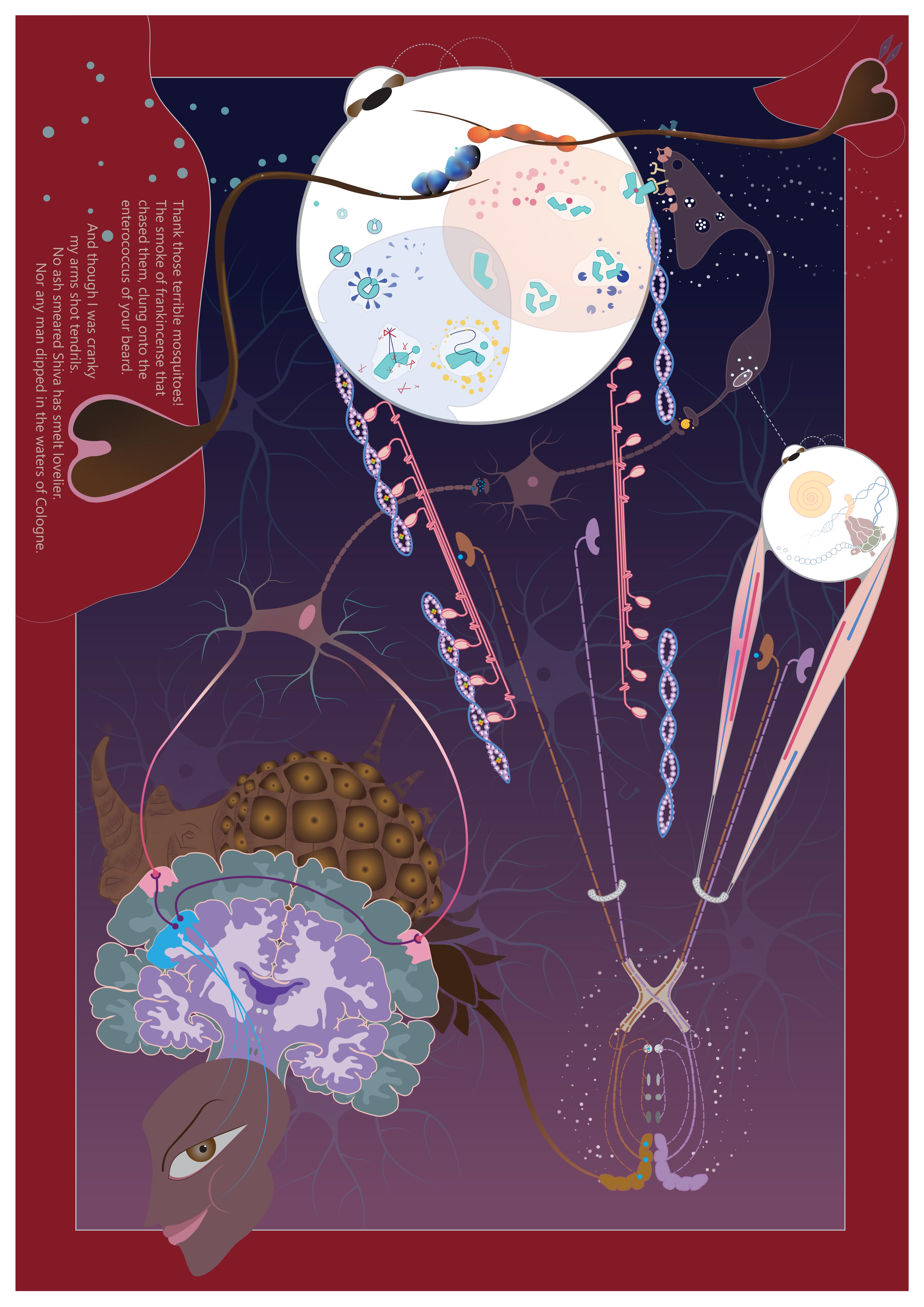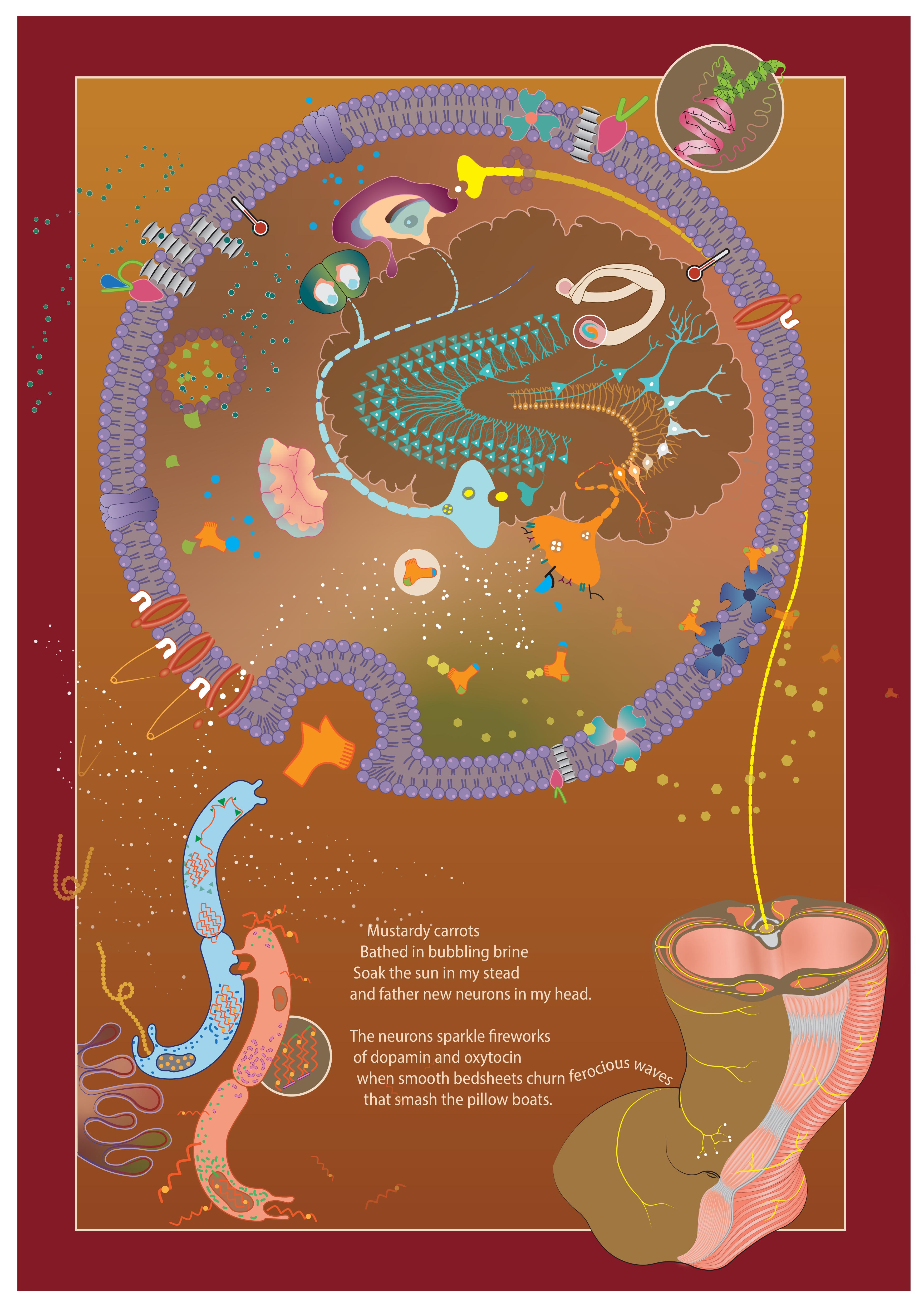The Forest On My Flesh
This ongoing series of digital illustrations has arisen from readings on decolonization by Walter Mignolo, who emphasizes the rediscovery of epistemic systems of cultures prior to colonization and from the simultaneous readings of English translations of classical Sanskrit erotic poetry Amarushataka (c. 750 CE) which dawned upon me the realization of the substantial elimination of the genre of erotica from the erstwhile colonies of Britain. If I were to decolonize my practice, what form could I offer to contemporary erotic poetry?
Current research about the Human Microbiome states that microbes (bacteria, fungi, viruses, etc.) in our gut extract nutrients from the food we eat. Some of these nutrients are prebiotics i.e., required as food for the microbe such as dietary fibres, and some of these become metabolites (which the microbe produces after its metabolic activities) such as short-chain fatty acids, which our bodies then absorb as nutrients. Thus, our diet affects our microbiome and our health. Microbes in the gastrointestinal tracts of humans have nerve endings that are connected to the brain via the Vagus nerve in the spinal cord and send signals which directly influence our behaviours. This is called the Gut-Brain Axis. Thus, microbes exert agency upon human lives.
In my practice, I expand this narrative to include microbes of the external body (skin, hair, genitals) with the assumption that they also send nerve signals to the brain affecting our behaviour (which further scientific research may prove true), as well as microbes of the local flora and fauna (such as microbes on the leaves of coconut trees and insects of my garden) and add details of foods I eat as well as things that touch or come in contact with my external microbiome.
Since our microbes influence our moods and behaviours, the significant question is – Do we fall in love, or do microbes make us fall in love when they want to “establish relations” with other microbiomes? Are feelings of love, jealousy, anger, and despair caused by the interaction of the microbes of my lover’s body and my body … and a kiss occurs when the microbes of our lips want to meet?
Employing the concept of Bārahmāsā (Song of the cycle of twelve months) from medieval Indian literature which studies the holistic interactions between nature, seasons, human activities and the corresponding human emotions, my digital illustrations inscribed with short erotic verses explore the Shringara Rasa (the passionate affect) of classical Indian aesthetics framed through research in Neuroscience, Microbiology, and Phytochemistry. These text and image-based works seek to mingle the aesthetics of classical Indian miniature paintings (from the Bārahmāsā, Ragamala and Nayak-Nayika genre) and medical illustrations.
Inspiration
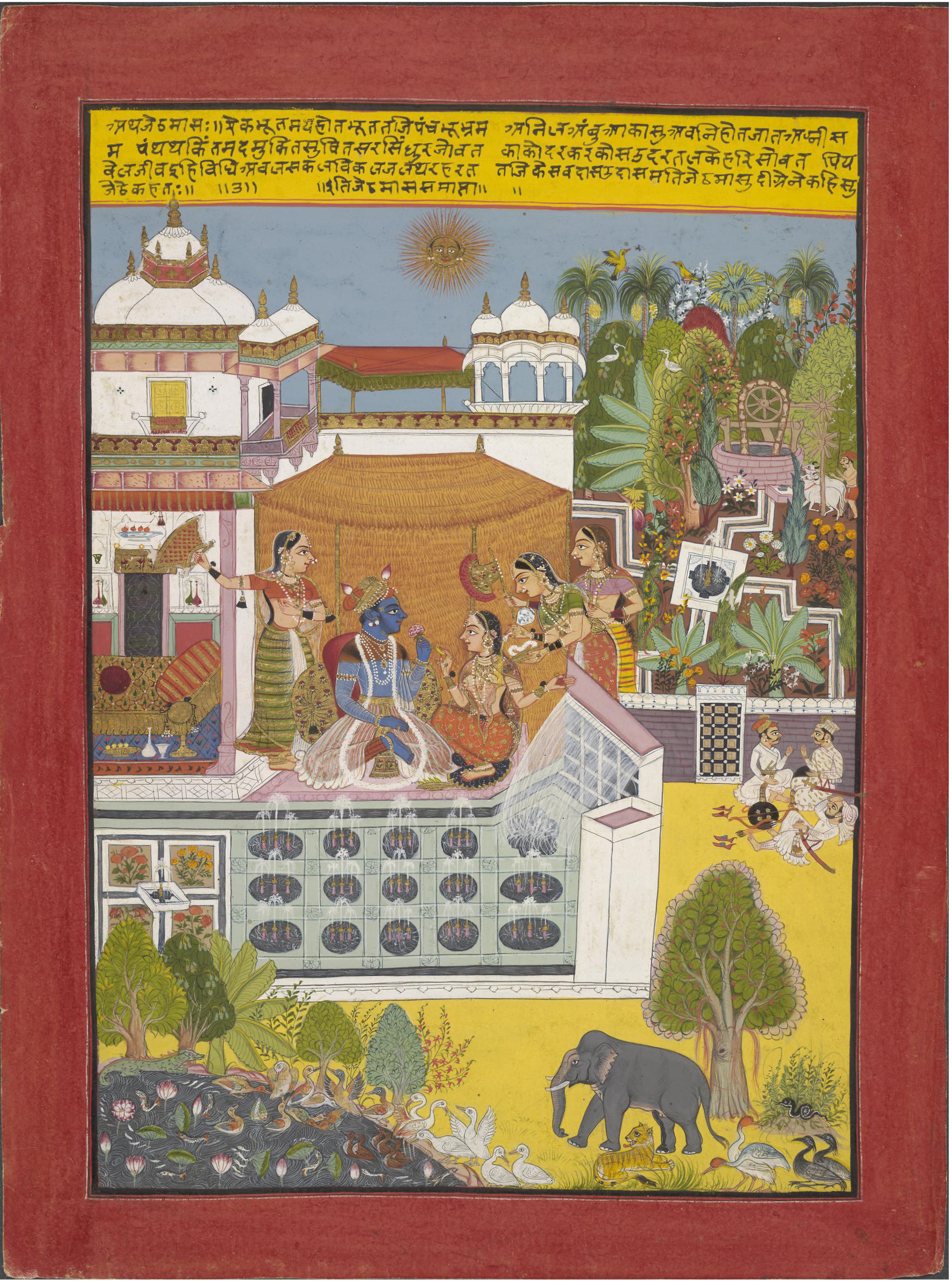
The month of Jyestha (mid May- mid June), c. 1675-1700, gouache on paper, 30 x 26 cm, Bundi District, Rajasthan, India. Image courtesy: The British Museum (https://www.britishmuseum.org/collection/object/A_1999-1202-0-5-6).
A folio from a Bārahmāsā set or ‘Songs of the seasons’ providing visual imagery for Bārahmāsā poetry. The main theme of a Bārahmāsā is generally the love between a Nayak (hero) and Nayikas’ (heroine) in union and in separation over the twelve months of the year affected by seasonal changes and social cultures. In each folio of this miniature series, the heroine implores the hero not to leave her alone in that month with its typical activities, festivities and seasonal bounties which create a unique atmosphere for passionate love. This romantic love constitutes an important aspect of Indian aesthetics also known as Shringara Rasa. Poet Keshavadas’s lyrics describing the concerned season are inscribed on top of the page.
The following images are from the series The Forest on my Flesh (digital illustrations, each 42×30 cm):
The Forest on My Flesh refers to the forests of microbiome on the outer skin as well as the lining of the intestines. The interdisciplinary knowledge-weaving involved in the current image-making and the layering of depictions of metabolic activities within the microbial bodies which then enter into other membranes in these images, tells a complex story of life as an ongoing process of making and breaking, of repetitive processes in the cycle of time, tells tales of the fallacy of hubris (we are mere molecules of chemicals) and helps me reconfigure the Divine in a new paradigm.
Read about this series in the Garland Magazine

